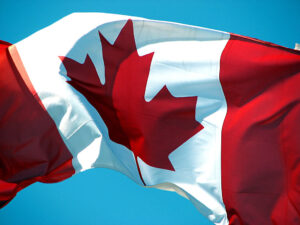Canadian Immigration, Which Immigration Program is Right for Me? Types, Conditions, Complete Analysis
Canada, with its vast and beautiful nature, high quality of life, and diverse cultures, is an attractive country that inspires many to dream of a new beginning. Like the United States, Canada also operates various immigration programs, and finding the right program for you is the first step to successful immigration to Canada.
However, Canada’s immigration system is complex and constantly changing, so it can be difficult to obtain accurate information. In this article, we will analyze the major programs for Canadian immigration in depth, and thoroughly guide you through the application requirements, necessary qualifications, and restrictions to be aware of for each program, to become a strong companion on your Canadian immigration journey.
index
- 1. Basic understanding of Canadian immigration
- 2. Economic Immigration Program
- 3. Family Sponsorship Immigration Program
- 4. Other immigration programs
- 5. Overview of the Immigration Application Process
- 6. Precautions and Restrictions
- 7. Conclusion: Drawing Your Canadian Immigration Roadmap
1. Basic understanding of Canadian immigration
Immigration to Canada is largely economic in nature. Economic immigration, based on a family relationship with a Canadian citizen or permanent resident. Family Sponsored Immigration, and for refugee protection or humanitarian reasons. Other immigration It can be divided into programs.
Each program has its own unique eligibility requirements and application process, and each program also has its own annual quota for admission. If you are considering immigrating to Canada, it is important to carefully choose the program that best suits your circumstances and goals. The Canadian government operates a variety of immigration programs to attract skilled workers to support economic growth, support family reunification, and fulfill international humanitarian responsibilities.
Therefore, applicants should explore the most realistic immigration path by considering various factors such as their education level, career, language skills, and family relationships.

2. Economic Immigration Program
Canada operates a variety of economic immigration programs to attract skilled foreign workers who can contribute to economic growth. These programs play a critical role in meeting the needs of the Canadian labour market and promoting innovation and productivity.
Express Entry (run by the federal government)
Express Entry is an online immigration application system run by the Canadian federal government that manages three main programs, creating a pool of applicants for Canadian permanent residence and selecting the most qualified candidates through an assessment system called the CRS score.
Candidates selected through regular lottery will be sent an Invitation to Apply for Permanent Residency (ITA).
-
Federal Skilled Worker Program (FSWP)
This program is for professionals with skilled work experience abroad.
Selection is based on the Comprehensive Ranking System (CRS) score, which comprehensively evaluates education, English/French language skills, career, age, connection to Canada, and spouse factors.
The FSWP aims to attract workers essential to the long-term growth and development of the Canadian labour market.
- condition:– At least one year of continuous full-time or equivalent part-time skilled work experience (NOC occupation group 0, A, B) – IELTS Academic score of 6.0 or higher in each section or equivalent French language proficiency – Canadian education qualification or equivalent overseas education qualification (ECA) – Proof of finances
- Limitations:– Certain occupations may be ineligible for the FSWP – Higher CRS scores increase your chances of selection – Older people may be disadvantaged in terms of CRS scores
-
Federal Skilled Trades Program (FSTP)
A program for skilled workers qualified in specific technical occupations.
Applies to certain trades such as welders, electricians, and plumbers, and must have a job offer from a Canadian employer or hold a license issued by a Canadian province or territory.
FSTP plays a critical role in addressing Canada’s skills shortage.
- condition:– At least 2 years of full-time or equivalent part-time work experience in a specific Trades occupation within the past 5 years – IELTS General Training score of 4.0 or higher in each section (some sections require higher scores) – A full-time job offer of at least 1 year from a Canadian employer or a Canadian provincial/territorial qualification – Proof of financial resources
- Limitations:– NOC occupation must be in an eligible occupation group under FSTP – Job offer or qualification required – Language proficiency requirements are lower than FSWP but must be met
-
Canadian Experience Class (CEC)
This program is for foreign graduates and temporary foreign workers who have gained skilled work experience in Canada.
You may apply for permanent residency based on your experience contributing to Canada's education system or labour market.
CEC plays a critical role in retaining a workforce that has already adapted to the Canadian economy.
- condition:– At least one year of full-time or equivalent part-time skilled work experience in Canada within the three years prior to application
(NOC occupation group 0, A, B) – IELTS Academic or General Training score of 5.0 or higher in each section (NOC 0 or A occupations require higher scores) – Maintain legal study or work status in Canada - Limitations:– Certain occupations may be ineligible for the CEC – Canadian experience is required – You may need to be residing in Canada at the time of application
- condition:– At least one year of full-time or equivalent part-time skilled work experience in Canada within the three years prior to application
Provincial Nominee Programs (PNPs) (run by provincial governments)
*Provincial Nominee Program (PNP)Each province and territory in Canada works with the federal government to Immigration program designed and operated by ourselvesThis program is for each region. Unique economic and demographic needsTo meet the needs of specific industries or occupations Directly select skilled workers and talentsAllows you to do so. For example, certain states may prioritize candidates for occupations that are in local shortage, such as nurses, IT professionals, or agricultural technicians.
PNP is Streams linked to the Express Entry system(EE-aligned stream) and Independently operated stream(Base stream) includes all of them, allowing applicants to choose the path that best suits their needs. If you receive a provincial nomination through the Express Entry linked stream, Add up to 600 points to your CRS score, which can greatly increase the possibility of permanent residency invitation. On the other hand, the independent stream can be applied for without registering with Express Entry. Apply for permanent residency directly according to the state government's own standardsProvides a path that can be taken.
PNPs serve as an important means of stimulating local job markets and encouraging population inflow into specific areas. Balanced economic development across Canadaclass Maintaining the communityIt plays a key role in attracting regional talent, especially in populous provinces such as Ontario, British Columbia, and Alberta, as well as smaller provinces such as Manitoba, New Brunswick, and Prince Edward Island.
Agri-Food Pilot
Agri-Food Pilotis in canada Agriculture and food processing industriesIntroduced for specific occupations that are experiencing a persistent shortage of manpower Pilot Immigration ProgramThis program is for foreign workers who have been offered a **full-time job offer** by a Canadian employer and are in a related field. Applicants with experience and skillsto Provides an opportunity to obtain permanent residency.
The main occupations that can be supported are Meat processing, mushroom cultivation, poultry farming, industrial food production These are core jobs in the agricultural and food processing industries. This program is especially for immigrants working in rural and regional areas. Expanding opportunities for long-term settlementAnd, the industry as a whole Stabilize the workforce structureThe purpose is to make you do something.
Agri-Food PilotThe Temporary Foreign Worker (TFW) program is designed to allow workers already working in Canada to apply for permanent residency in their occupation. At least 1 year of full-time experience within the past 3 yearsThis is required. In addition, the employer Job Offer that meets employment criteria and wage requirements, and applicants must provide Basic immigration requirements such as language skills, education, and financial proofmust be satisfied.
This program is in Canada. Ensuring food security and maintaining agricultural competitivenessplays a key role in Canadian society for foreign workers. Path to becoming a regular member.
Atlantic Immigration Program (AIP)
*The Atlantic Immigration Program (AIP) is a program for immigrants living on the Atlantic coast of Canada. 4 states—Nova Scotia, New Brunswick, Prince Edward Island, Newfoundland and Labrador-of Job Offer from EmployerReceived Skilled and unskilled foreign workers, and Graduates from the areaIt is an immigration program for .
This program Employer-driven immigration systemIt operates as a solution to the local manpower shortage problem. Economic growth and population inflowwas introduced to encourage.
AIP in particular Support services to promote local settlementIt is linked to the Atlantic Coast region, helping immigrants better adapt to their new environment. long-term social and economic stabilityWe are seeing significant impact in building .
Caregivers Program
This is a permanent residency program for foreign workers who have experience working as caregivers for children or people with disabilities in Canada.
This program provides a path to permanent residency for foreign workers who provide critical care services in Canada, and plays a vital role in helping them make long-term contributions to Canadian society and communities.
Additionally, we are contributing to improving the quality of care services in Canada by supporting caregivers to have better living conditions and legal protections.
Rural and Northern Immigration Pilot (RNIP)
A community-led immigration pilot program for skilled and unskilled foreign workers who have a job offer from an employer in a participating community in Canada.
RNIP focuses on meeting the economic needs of rural and northern communities, playing a key role in alleviating population decline in these areas and stimulating local economic activity.
We also work closely with local communities to provide tailored immigration solutions, ensuring a stable and sustainable workforce supply for participating communities.
Start-up Visa Program
This is an immigration program for entrepreneurs with innovative business ideas who can start a business in Canada and attract investment from designated investment institutions.
The program plays a pivotal role in activating Canada’s innovation ecosystem, supporting the growth of technology-based startups and entrepreneurs.
Additionally, it injects new vitality into the local economy through innovative ideas and creative business models, and contributes to enhancing competitiveness in various industrial sectors.
This process will also have a significant impact on creating new jobs and diversifying the economy, providing a critical foundation for Canada to establish itself as a global innovation hub.
Self-Employed Persons Program
The Self-Employed Persons Program is an immigration program for foreign nationals who have self-employment experience in the cultural, artistic, and agricultural fields and can actively contribute to those fields in Canada.
The program focuses on fostering creative activity and agricultural productivity within Canada, while bringing together people from diverse cultural backgrounds to contribute to the rich cultural diversity of Canadian society.
In addition, as self-employed individuals, they play a role in promoting economic vitality and have a positive impact on local communities and economic development. Through this, they provide an important foundation for the development of Canada's cultural arts and agricultural industries, and also contribute greatly to enhancing the value of the national brand.

3. Family Sponsorship Immigration Program
Canada operates a family sponsorship immigration program that allows Canadian citizens and permanent residents to sponsor spouses, children, parents, grandparents, and other eligible relatives to come to Canada and obtain permanent residency. This program plays a vital role in helping families reunite and strengthening the integration of Canadian society.
-
Spousal, Common-law Partner, and Conjugal Partner Sponsorship
Canadian citizens or permanent residents can sponsor their spouse, common-law partner, or partner in a marriage to Canada to obtain permanent residency. Sponsors must meet certain financial requirements and prove that the relationship is genuine.
-
Parents and Grandparents Sponsorship
Canadian citizens or permanent residents can sponsor their parents or grandparents to come to Canada and obtain permanent residency. The program accepts a limited number of applications each year, and sponsors must meet strict financial requirements.
-
Dependent Child Sponsorship
Canadian citizens or permanent residents can sponsor their dependent children to come to Canada and obtain permanent residency. Dependent children must generally be unmarried and under the age of 22, but there are exceptions in certain circumstances.
-
Other Relatives Sponsorship
Under certain conditions, a Canadian citizen or permanent resident may sponsor an orphaned sibling, nephew, niece, grandchild, or other relative to Canada to become a permanent resident. This program is very limited, and sponsors must meet certain requirements.
4. Other immigration programs
As a member of the international community, Canada has a humanitarian responsibility and operates special immigration programs to provide safe haven for individuals in need of special protection, including:
-
Refugees and Protected Persons: Canada is United Nations (UN) Refugee Conventionand provides permanent residency to those who have been granted refugee status and those in need of protection under the Immigration and Refugee Protection Act. Refugee applications can be made through two channels:
-
- In-Canada Asylum Claim: Individuals within Canada's borders who are unable to return to their home country where they face persecution, torture, or threats to their lives may apply for refugee protection. Applicants must be considered as refugees by the Immigration and Refugee Board of Canada (IRB). The IRB is an independent judicial body that objectively assesses the truthfulness and risk of refugee claims. If recognized as a refugee, they are eligible to apply for Canadian permanent residence.
-
- Refugee and Humanitarian Resettlement Program: Canada works with international organizations such as the United Nations High Commissioner for Refugees (UNHCR) to resettle people registered as refugees abroad to Canada. The program is divided into two subcategories: Government-Assisted Refugees (GAR) and Privately Sponsored Refugees (PSR). Government-Assisted Refugees are resettled with financial support from the Canadian government, while Privately Sponsored Refugees are resettled with financial support from individuals or organizations who are Canadian citizens or permanent residents.
-
-
Humanitarian and Compassionate Grounds (H&C): This is a special provision that provides an opportunity for individuals with exceptional circumstances who do not meet the general requirements of Canadian immigration law to apply for permanent residence. H&C consideration is based on a comprehensive assessment of the applicant’s unique personal circumstances, ties to Canada, ability to establish a stable life in Canada, and the hardship they would face if their application were denied. H&C applications are a highly discretionary decision, and the likelihood of success will vary greatly depending on the unique circumstances of each case. Factors that may be considered positive include serious health issues, family circumstances, long-term residence in Canada, and contributions to the community. H&C applications can only be made from within Canada, and individuals who have received a removal order may also apply for H&C under certain conditions.
These other immigration programs reflect Canada’s humanitarian values and provide an important safety net for those in need of protection. The application process is complex and the documentation required is extensive, so if you believe you may be eligible for one of these programs, it is important to seek professional assistance from an experienced immigration lawyer or licensed immigration consultant.
5. Overview of the Immigration Application Process
The Canadian immigration application process has different detailed steps and requirements depending on the type of immigration program you are applying for. However, most economic immigration and family-sponsored immigration programs follow the following general steps. Accurate information and thorough preparation at each step are the keys to successful immigration.
-
Check eligibility and choose a program: First, you need to choose the Canadian immigration program that is right for you. Carefully review the various economic immigration (Express Entry, PNP, etc.) and family sponsorship immigration programs explained above, and decide on the most likely program based on your education, career, age, language skills, family relationships, etc. The first step is to check if you meet the minimum qualification requirements for each program.
-
Prepare your documents: Prepare all the documents required for the immigration program you have chosen. These can range from passports, birth certificates, marriage certificates, academic transcripts, transcripts, employment contracts (if applicable), financial statements, English or French language proficiency test results (IELTS, CELPIP, TEF, etc.), background check results, medical examination results, etc. All documents must be originals or certified copies, and documents that are not in English or French must be translated by an accredited translation agency and certified as such. Preparing documents is a time-consuming and labor-intensive step, so it is recommended to check the list of required documents in advance and prepare them step by step.
-
Submit your online profile/application: Most Canadian immigration applications are processed online.
- Express Entry: First, you complete and submit an Express Entry profile online. This profile includes personal information such as education, work experience, and language skills, and you will receive a Comprehensive Ranking System (CRS) score. Then, you must wait for an invitation to apply (ITA) from the Canadian government.
- PNP: For the Provincial Nominee Program (PNP), you must first apply for nomination through the website of the relevant provincial government. If you are nominated after reviewing the criteria of the provincial government, you can apply for permanent residence to the federal government. Some PNPs are linked to Express Entry, so you can also receive a nomination through your Express Entry profile.
- Family Sponsored Immigration: The sponsor, a Canadian citizen or permanent resident, must first submit a letter of intent to sponsor online and undergo a sponsorship screening. Once the sponsorship is approved, the sponsor can submit the permanent resident application for the sponsored family member.
-
Physical Examination: If you receive a medical examination order from Immigration, Refugees and Citizenship Canada (IRCC) after applying for immigration, you must undergo a medical examination at a designated hospital. The results of the medical examination will be sent directly to IRCC, and certain diseases or health conditions may affect your immigration approval.
-
Criminal Record Check: Immigration Canada requires a criminal record check for applicants and accompanying family members over the age of 18. This is a process to ensure that applicants do not pose a threat to the safety of Canada. Police records from Korea and other countries where applicants have resided must be submitted.
-
Interview (if applicable): Most economic immigration applications are processed on a document-based basis, but IRCC may request an interview if it deems necessary. The interview is a procedure to verify the applicant's eligibility and the authenticity of the submitted documents.
-
Request additional documentation (if applicable): IRCC may request additional information or documentation during the review process. Any requested documentation must be submitted accurately and within the specified deadlines.
-
Final decision and visa issuance: Once your application has been approved through all the review processes, you will receive a Confirmation of Permanent Residence (COPR) and an immigrant visa from IRCC. The COPR contains the information and conditions required to enter Canada.
-
Entering Canada and Obtaining Permanent Residency: Upon entering Canada within the validity period, you will officially become a Canadian permanent resident. Upon entry, you will undergo a final check by an immigration officer.
Each immigration program has different detailed procedures and required documents, so Canada Immigration Office official website https://www.canada.ca/en/immigration-refugees-citizenship.html It is a safe and efficient way to check the exact information of the program you wish to apply for and, if necessary, seek the assistance of a certified immigration consultant.
6. Precautions and Restrictions
When preparing to immigrate to Canada, you should carefully check the eligibility requirements for each program and be careful not to provide false or inaccurate information. Also, immigration policies can change frequently, and it is important to check the latest information before applying. The waiting period for visa issuance can vary greatly depending on the program and application period, so you should prepare with enough time. Also, you should consider that after immigrating to Canada, you may face difficulties such as adapting to a new culture, improving language skills, and entering the labor market. Financial preparation is also an important factor, and you should secure enough initial settlement costs and living expenses.
7. Conclusion: Drawing Your Canadian Immigration Roadmap
Immigrating to Canada is a journey that involves various programs and complex procedures.
What’s even more encouraging is that the Canadian government remains positive about immigration for the future.
Announced Immigration intake plan (2024-2026)According to the report, Canada plans to admit 485,000 immigrants in 2024, and will further increase that target to 500,000 in 2025 and 2026.
This is because the Canadian government deeply recognizes that immigrants invigorate the Canadian labour market and are a key driver of economic growth.
Therefore, Canada is expected to continue to open its doors to skilled workers and immigrants from diverse backgrounds, offering a bright future for those who dream of immigrating to Canada.
We hope that the information provided in this article will help you understand and serve as a useful first step in choosing the right immigration program for you. To make your dream of a new life in Canada a reality, consistent effort and accurate information acquisition are essential. We hope that this in-depth analysis will serve as a solid foundation for you to draw a successful Canadian immigration roadmap.
Official website of the Government of Canada (https://www.canada.ca/en/immigration-refugees-citizenship.html) for the latest information and, if necessary, consider seeking the assistance of a licensed immigration consultant. We sincerely hope that you will successfully immigrate to Canada.
* Preferred countries for overseas immigration Go see

